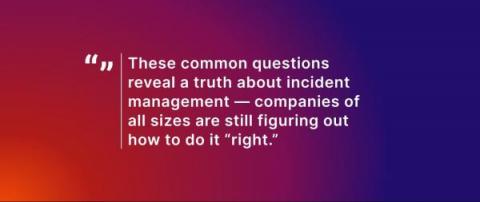Why you should ditch your overly detailed incident response plan
When critical incidents happen — which they inevitably do 😅 — and you’re in the middle of trying to figure out what the best thing to do is, it can feel comforting to know that you’ve got a pre-prepared list of instructions to follow, commonly known as an “incident response plan”: In theory this sounds quite simple, and a typical flow you might envision is: It might be tempting to think that the hardest part of running incidents is finding or writing a checkl










